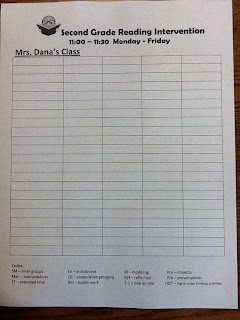I want to start by saying that this post looks a bit overwhelming (and it is)
but all the things shared will help in a better understanding of the RTI model and how it can look in our school. I have viewed many resources and I have only included the ones that I feel are important in understanding this model. There are also a few ideas of how to organize and track the data you have for your students in your classroom.
The following videos give an overview of how the RTI model works and how certain aspects of it can be flexible to adjust to individual schools.
Video #1
http://www.youtube.com/watch?v=IsAqh2Pxg0AVideo #2- Watch the video on Boulevard Elementary School
http://www.rtinetwork.org/professional/virtualvisits
Here is an article going a little more in-depth than the videos about RTI. This would be something good to read or discuss during PLC meetings with your grade level!
http://www.rtinetwork.org/essential/tieredinstruction/tiered-instruction-and-intervention-rti-model
Parent involvement/communication in the RTI model is crucial. With meetings starting up, the following clip gives an overview of how parents are involved and why this is an important part of the model.
http://www.nrcld.org/rti_practices/parent.html
Here is a basic description of the three tiers from one of the above articles:
All children receive Tier 1 instruction, but those children in need of supplemental intervention receive additional instruction at Tier 2 or Tier 3. Tier 2 consists of children who fall below the expected levels of accomplishment (called benchmarks) and are at some risk for academic failure but who are still above levels considered to indicate a high risk for failure. The needs of these students are identified through the assessment process, and instructional programs are delivered that focus on their specific needs. Instruction is provided in smaller groups than Tier 1 is (which would be all children in a teacher's classroom).
Typically, depending on the model of RTI being used, small groups consist of anywhere from about 5 to 8 children. Tier 3 consists of children who are considered to be at high risk for failure and, if not responsive, are considered to be candidates for identification as having special education needs. The groups of students at Tier 3 are of much smaller sizes, ranging from 3 to 5 children, with some models using one-to-one instruction. Here are some links to websites with lesson ideas to use in your classroom when working in small groups:
Acedemic Interventions
http://www.interventioncentral.org/academic-interventions
http://www.freereading.net/index.php?title=Main_Page
Behavior Interventions
http://www.interventioncentral.org/behavioral-interventions
Finally....here are some examples in our building of how teachers are keeping up with what they do each day/week with students during PIT stop time. If you need help setting up a system or want me to email the clipboard sheet just let me know!


No comments:
Post a Comment